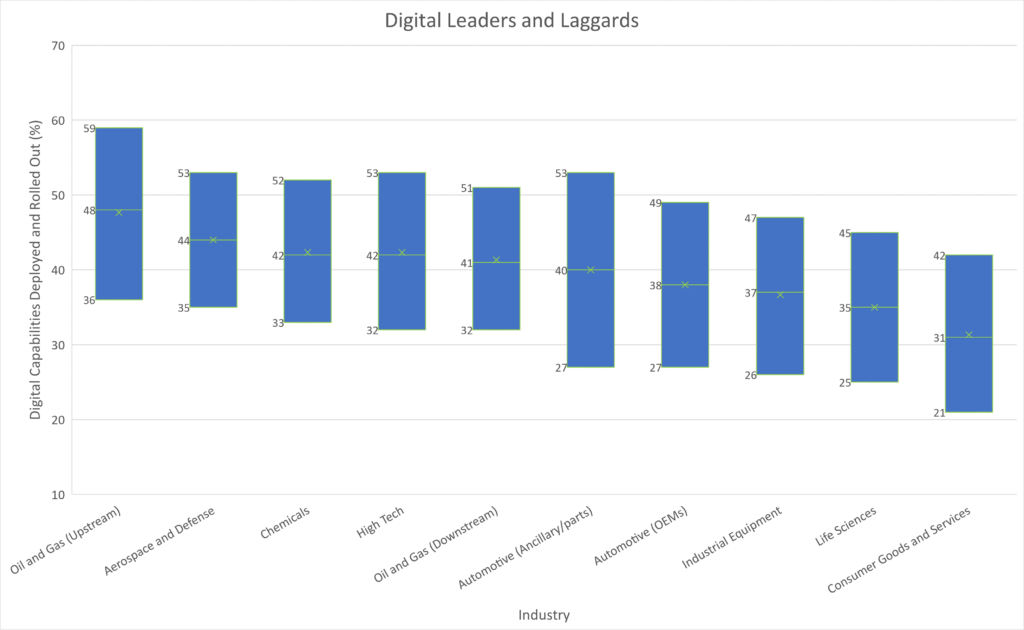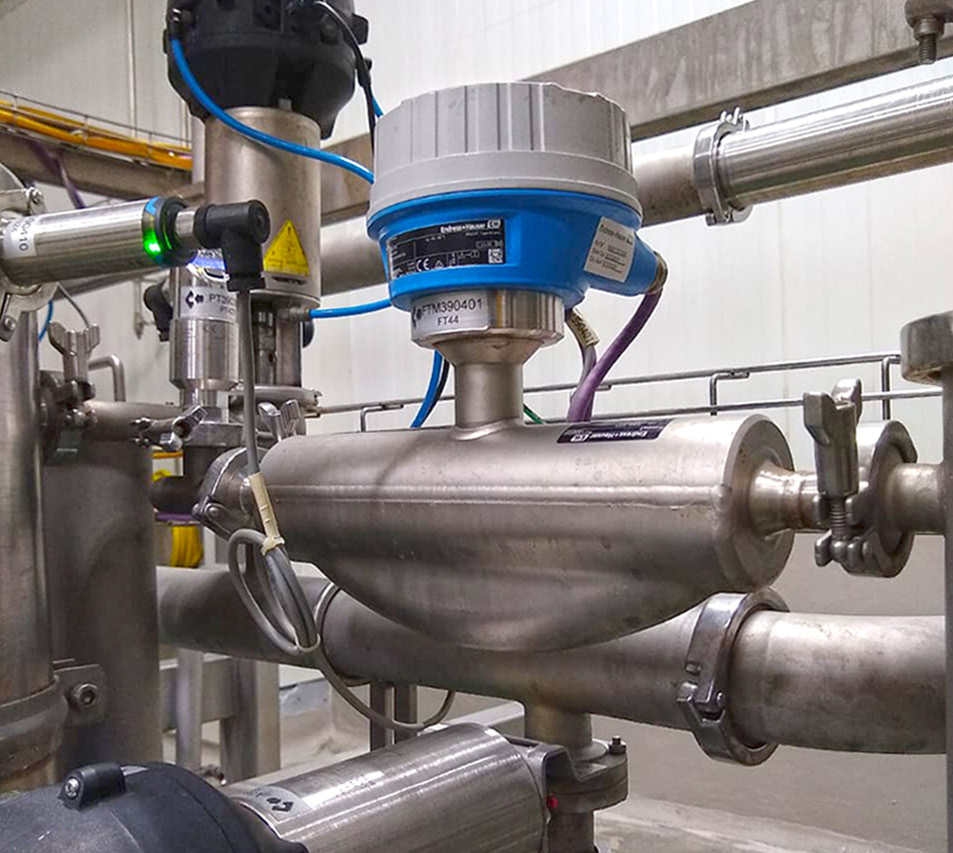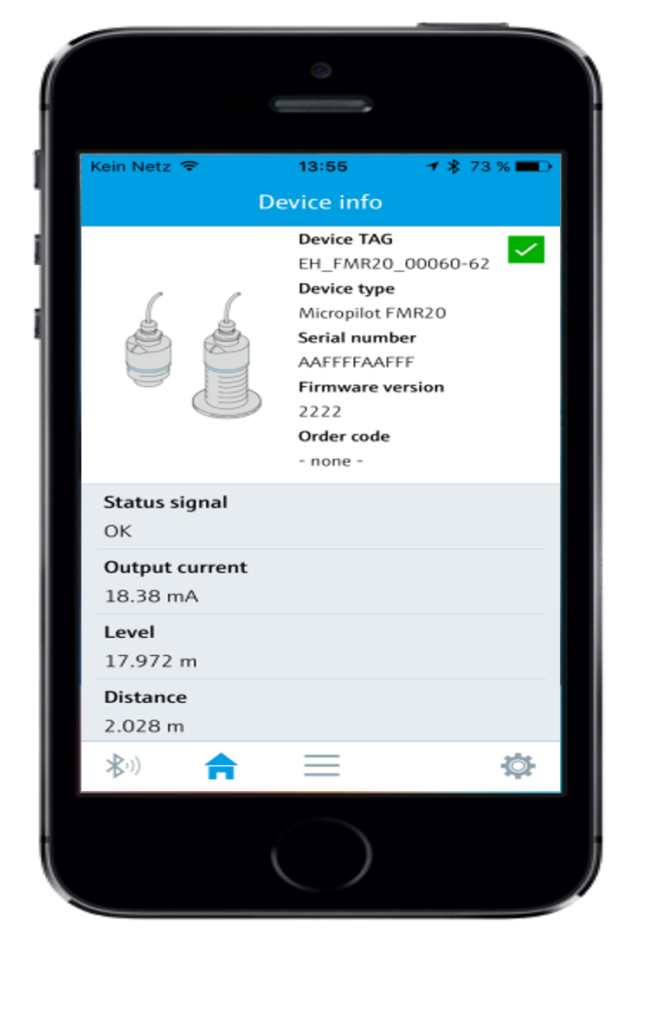2025 industry trends in North American process manufacturing
Navigating today’s uncertain economic and regulatory landscape requires market agility, achievable on a foundation of technological preparedness and strategic vision […]
With the availability of information in the age of Industry 4.0, professionals in many industries are leveraging their data to create production-enhancing insights with smart instruments to improve operational efficiency, increase uptime, and reduce maintenance costs. However, digital data adoption in the food and beverage (F&B) industry is trailing others.

One of the primary reasons for this delay in adoption is a lack of awareness of the digital capabilities available in existing smart instruments. There is a wealth of diagnostic and other information available to processors, enabling plant staff to get far more from their smart instruments than a single 4-20mA primary process variable.
This additional information, transmitted from instruments to host systems via digital communication protocols, helps plant personnel improve efficiency and avoid unplanned shutdowns by empowering them to implement proactive maintenance and predictive monitoring. Host systems are typically those used for control, monitoring, asset management, and related purposes.
As the F&B industry becomes more aware of these instrument capabilities, processors who are witnessing the success of their peers in other industries, are beginning to also embrace this digitalization trend.
Check out how utilizing smart instruments helped improve processes in other industries
Traditional analog instrumentation is limited to transmitting a single process variable over a 4-20mA current loop where communication is one way, from instrument to host system. This provides no way to send commands from a host system to an instrument, or to view instrument diagnostic information, making it nearly impossible to foresee instrument failure.
In the best cases, these types of failures can cause unplanned downtime and costly instrumentation repairs but in the worst-case catastrophic equipment damage and safety hazards could arise.
To help alleviate these risks, installing, or using existing, smart instrumentation that supports digital protocols is the first step, but there are additional challenges once this is in place. Many F&B facilities often require complex communication strategies due to tightly packed machinery and steel walls, stifling use of wireless protocols.
To circumvent this obstacle, it can be necessary to install several wireless communication gateways. Additionally, instrumentation in F&B facilities must be able to withstand wash-down, a characteristic that is not always present among digital devices.
By implementing both existing and new smart instrumentation into plant designs, facility operation and optimization become much more manageable tasks due to the leverage digital communication protocols present. These digital protocols can be used in place of, or on top of, traditional analog communication protocols, increasing capabilities and value.
For retrofitted applications where hardwiring transmitters back to a host system is convenient, or for existing wired installations, instruments can use the two-way digital HART communication protocol, which is superimposed on the 4-20mA analog current loop. This digital protocol enables plant personnel to send and receive data between an instrument and a host system.
The exchanged data includes diagnostic, calibration, maintenance, process, and other information, greatly increasing configuration ease, and providing a wealth of operational process insights.

An estimated 80% of instrumentation used for real-time control and monitoring in the F&B industry already supports HART, but many processors are not using it simply because they are unaware of this capability. HART-enabled instruments can transmit multiple process values to a host system which provides flexibility to continue using analog loops for real-time control, while also leveraging additional process and diagnostic data to make data-driven decisions.
Some newer instruments support Ethernet-based protocols, providing several of the same benefits as HART, but typically operating at higher speeds.
Because wired implementations can be impossible or inconvenient, if your facility geometries allow it, wireless instruments can provide the best solutions for your process. Many smart instruments supply these connectivity options natively, while adapters can be added to provide this functionality for those that do not.
WirelessHART and Bluetooth instruments typically send and receive as much or more diagnostic and process data as their wired HART counterparts. While this data can provide immense benefits to a wide range of host systems and applications, many facilities do not take full advantage of it.
For example, automation systems regularly use flow, pressure, temperature, level, and other process data to monitor and control processes, but they often discard status and diagnostic data, missing out on opportunities to optimize, simplify, and safeguard their plant operations.
When this data is ingested by intelligent plant analysis systems, facilities increase their ratio of proactive to reactive maintenance, thus reducing unplanned downtime, along with equipment and human safety hazards.
To ensure the user is getting the most from their technology, newer Endress+Hauser smart instruments typically include Bluetooth interfaces, accessible via the SmartBlue app on a smartphone or tablet, making it easier for technicians to monitor instrument health. With proper authorization, they can also change tags and other configuration parameters. The mobile device handles communication which eliminates the need for a connection to an existing plant

These interfaces include guided procedures for in-situ testing, and they provide traceable verification logs because records are stored in instruments’ local memory. Additionally, when anomalies or issues are detected, the SmartBlue interface provides easy-to-follow recommendations for remedial actions.
Smart instrumentation provides indispensable data to help processors optimize plant operations by utilizing digital communication between smart instruments and host systems. As well as analyzing multivariable process values, along with diagnostic and other information.
These insights can help improve your process efficiency and assist in avoiding unplanned shutdowns through proactive maintenance procedures. They can also help pinpoint optimization opportunities within your process to ensure you can remain competitive in the digital future.
Navigating today’s uncertain economic and regulatory landscape requires market agility, achievable on a foundation of technological preparedness and strategic vision […]
Technology you can trust in hazardous areas, critical applications and highly regulated industries The process control industries are characterized by […]
Discover the top 10 most viewed blogs of 2022 covering challenges and solutions across all industries May 9, 2023 – […]
Comments